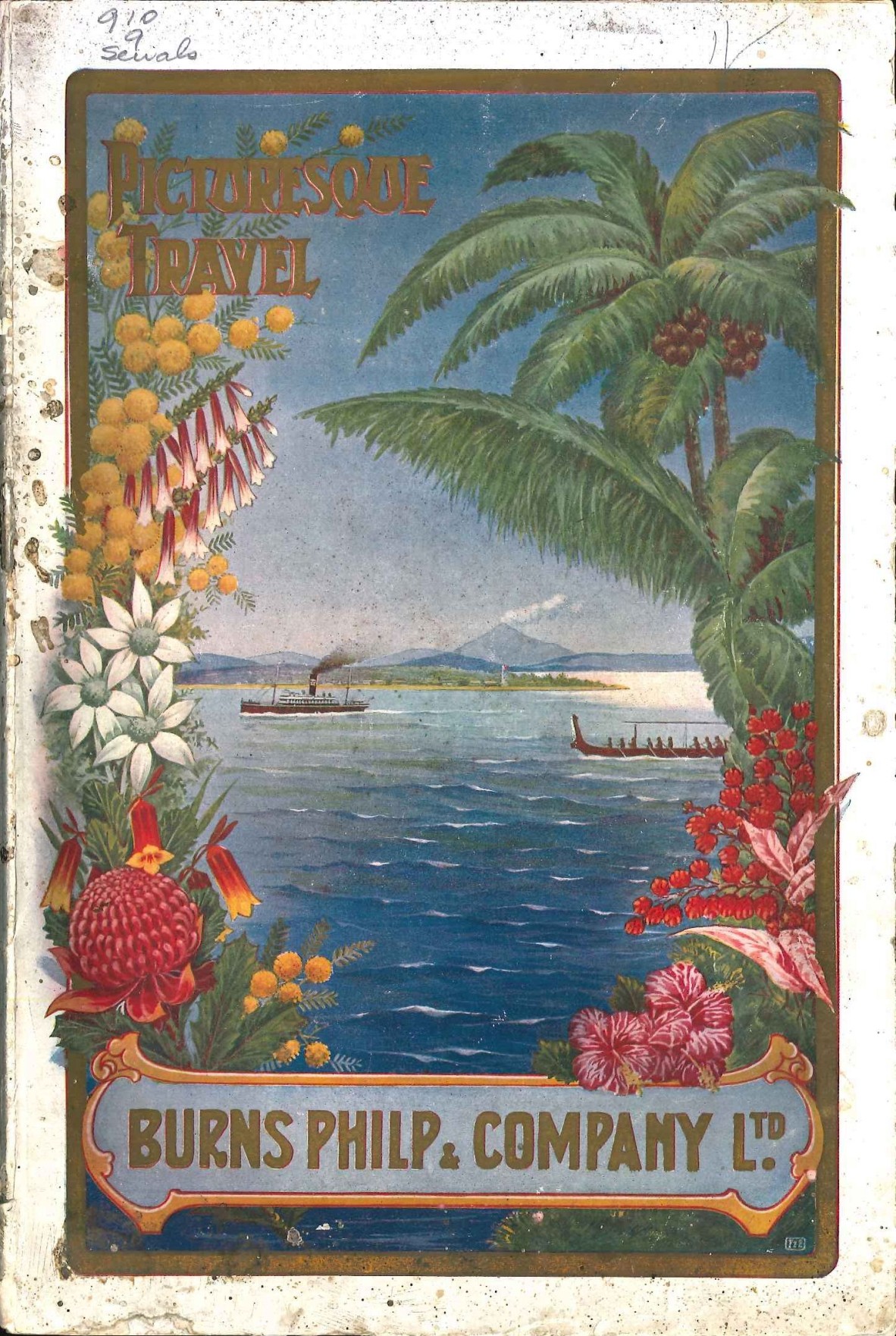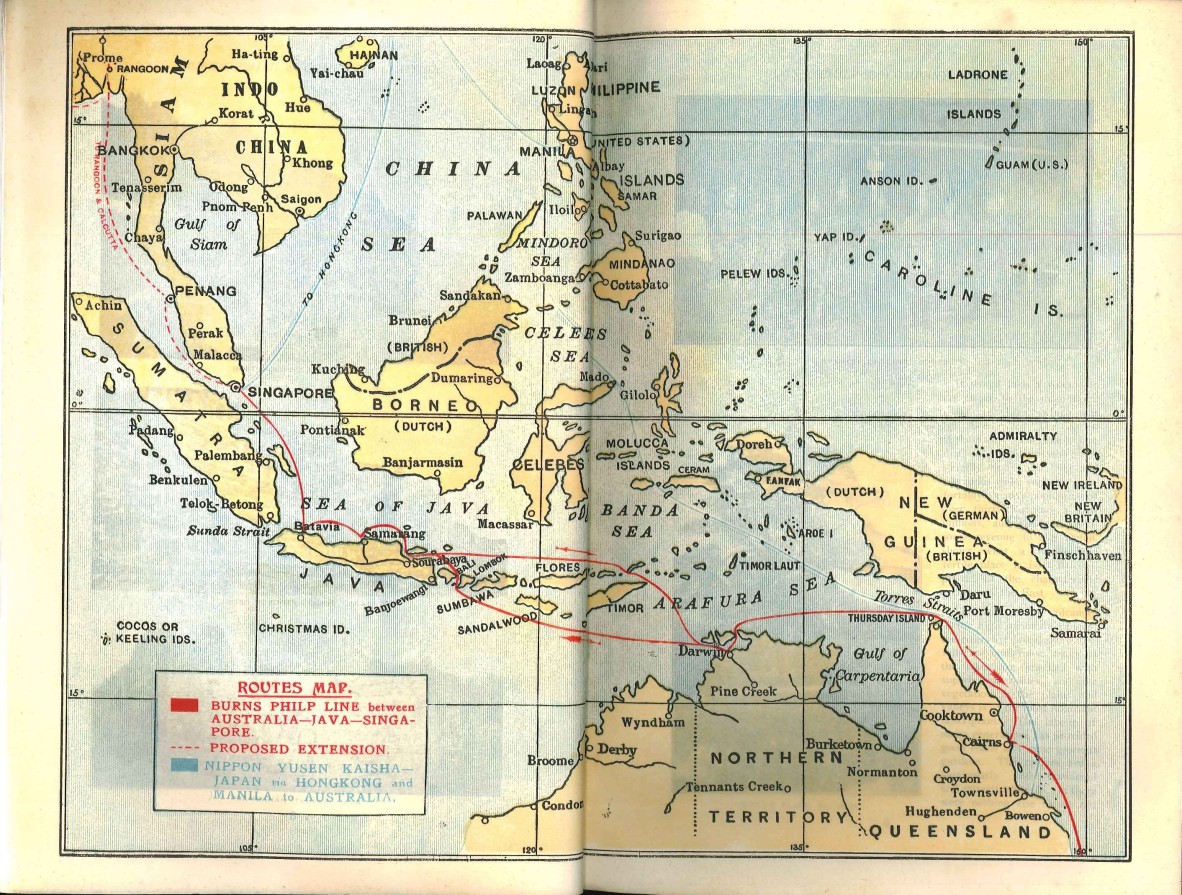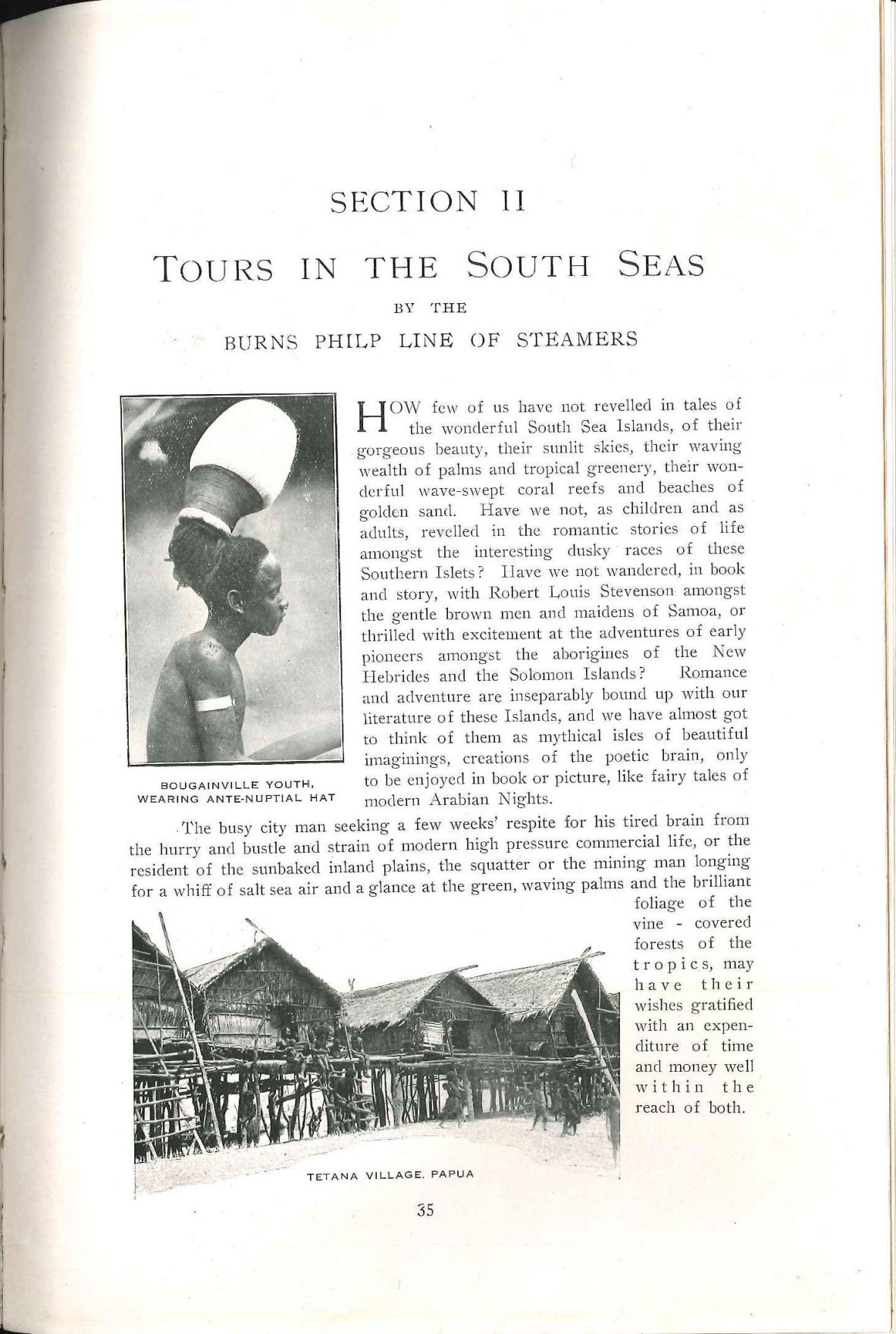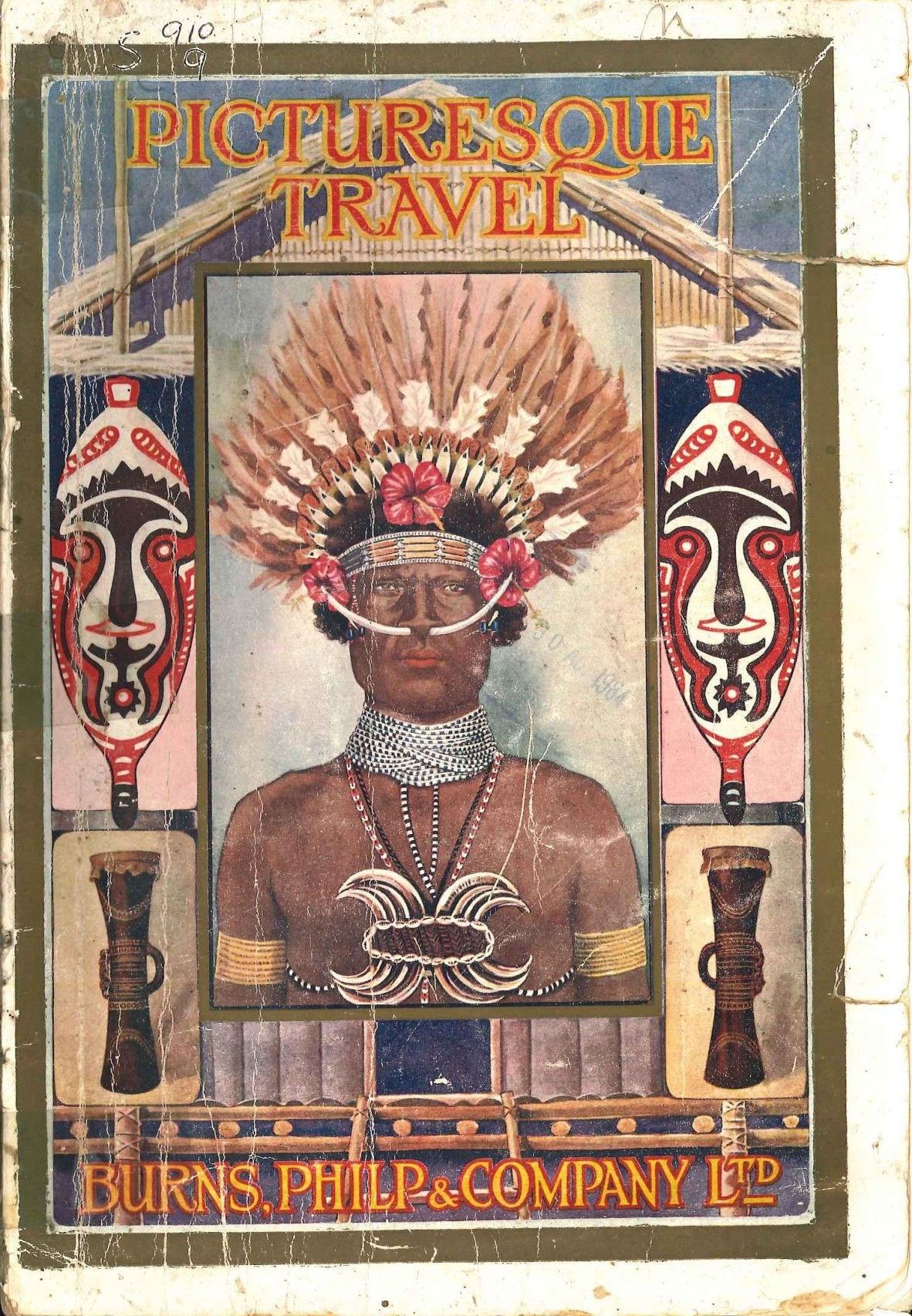Picturesque Travel was an in-house publication of trading and shipping company Burns Philp.

"One of the most eagerly looked for of Australian annuals", the first issue appeared in 1911 and the last in 1925.
Its major function was to advertise the travel arm of the business but the pages were also packed with information about everything the traveller might need to know, from the timetables and fares of South Manchurian Railways to the best day trips out of Brisbane.
It was highly illustrated with a large number of photographs and various route maps showing the company's growing portfolio of cruises and package tours.


Burns Philp & Company Ltd.
Burns Philp had its origins in North Queensland in the 1870s. With the discovery of gold, Scottish immigrant James Burns decided to start a business in Cleveland Bay on the site of what was afterwards called Townsville. He soon realized that in order to secure supply of the goods he needed he would have to charter his own vessels to ship them from Brisbane or Sydney. This was the beginning of what would eventually grow into a sprawling international empire.
Burns went into partnership with Robert Philp (later Premier of Queensland) and the business was incorporated under the name of Burns Philp & Co. Ltd. in 1883. In 1884 they launched their New Guinea Excursion Trip, often described as the official beginning of tourist cruises in the South Pacific.
Although passenger travel was in reality a small part of the business, Burns recognized the potential of the tourist market and they went on to develop package tours all over the world, publicizing them with cruise guides (the first in 1886) and with in-house publications such as this.


World War 1
The Great War affected Burns Philp just as it did every part of Australian society. The 1920 issue, the first to appear after the conflict, has this to say in the introduction.
Five years have passed since the publication of the last volume of "Picturesque Travel" - five of the most momentous years in the world's history. Travel for pleasure virtually ceased during that terrible period of the war, and many great passenger and freight steamers were diverted to military purposes. We saw our transports sail from Australia, carrying from this young unmilitary land armies greater than those which overthrew Napoleon, and the people who remained spent long and weary months, stretching into years, awaiting their return. Added to the ordinary perils of war were the new and fiendish devices of the enemy, who sowed the sea with stealthy mines, and infested it with submarines which aimed at the sinking of our vessels "without a trace," and firing on the helpless and children who escaped the sinking ships.
We are thankful to be able to say that all our ships sailed and returned safely, with one notable exception - the "Matunga". The staunch vessel, carrying passengers and crew numbering sixty-four souls, all told, and a large cargo, totally disappeared, and no news whatever of her fate was to be had for many a day. The relatives and friends of those on board suffered a cruel anxiety for months, until it was learned that the "Matunga" had been sunk by the enemy's raider, named appropriately the "Wolf". The crew and passengers had been taken to Germany as prisoners, and there exhibited as evidence of the powers of the German Navy, which made war against civilians more brutal than that of the worst savages.
Apart from that disaster, the business of BURNS, PHILP & CO. LTD. has progressed favorably during the last five years - thanks to the might of the British Navy, aided by our own little Navy, which kept the Pacific practically free from danger after the destruction of the enemy's battleships at Falkland Islands.
Twenty-eight staff members of Burns Philp were killed in the war and thirty-eight wounded out of the two hundred and one who enlisted.
An Honor Roll "comprising six handsome marble tablets" was placed in the vestibule of the Head Office in Sydney "setting forth all the names of the Company's employees who bravely enlisted and left Australia to fight for the Empire" (Picturesque Travel, 1920, p 11)


Burns Philp became a household name in Australia. Not only do their publications tell the story of the early days of cruising out of Australia, they are also a rich source of information about the minutiae of travel; the fares, how much free luggage was allowed (between 20 to 40 cubic feet for first class passengers!), the charges for transmitting wireless messages to the nearest shore station and even the timetables and fares for South Manchurian Railways.
It was succeeded by BP Magazine, published from 1928 to 1942.
Links
- Burns Philp
- Burns Philp Shipping Company
- Queensland Business Leaders Hall of Fame
- PICTURESQUE TRAVEL. (1910, December 13). The Sydney Morning Herald (NSW : 1842 - 1954), p. 4. Retrieved July 18, 2013, from http://nla.gov.au/nla.news-article15198942 "a quite sumptuous volume illustrative of the various holiday tours that may be made under their auspices" "the whole publication is crammed with dainty photographs. There are also a number of exceedingly useful maps."
- PICTURESQUE TRAVEL. (1913, December 19). Cairns Post (Qld. : 1909 - 1954), p. 7. Retrieved July 18, 2013, from http://nla.gov.au/nla.news-article39953603 "One of the most eagerly looked for of Australian "annuals" is "Picturesque Travel," the finely illustrated and artistically arranged compendium of world-travel issued by Burns Philp and Company"
- PICTURESQUE TRAVEL. (1925, June 22). The Sydney Morning Herald (NSW : 1842 - 1954), p. 12. Retrieved July 26, 2013, from http://nla.gov.au/nla.news-article16211665. Announces the publication of the 1925 issue.
Comments
Your email address will not be published.
We welcome relevant, respectful comments.